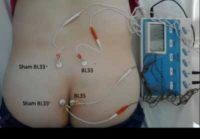28 Jun Electroacupuncture Reduced Leakage in Stress Urinary Incontinence
MedicalResearch.com Interview with:
Baoyan Liu, MD
Guang’an Men Hospital
China Academy of Chinese Medical Sciences
Beijing, China
MedicalResearch.com: What is the background for this study? What are the main findings?
Response: The prevalence of stress urinary incontinence(SUI) is as high as 49% and varies according to the population studied and the definition of stress urinary incontinence.
SUI causes psychological burden, affects relationships, lowers physical productivity, and decreases quality of life in women. Yet, few effective therapies are available for treating stress urinary incontinence.
In this randomized clinical trial that included 504 women, the mean decrease in urine leakage, measured by the 1-hour pad test from baseline to week 6, was 9.9 g with
electroacupuncture vs 2.6 g with sham electroacupuncture, a significant difference.
MedicalResearch.com: What should clinicians and patients take away from your report?
Response: Over a 6-week treatment period, electroacupuncture involving the lumbosacral region showed a greater reduction in the amount of urine leakage than sham electroacupuncture.
The effects persisted 24 weeks after treatment. The incidence of adverse events was low.
MedicalResearch.com: What recommendations do you have for future research as a result of this study?
Response: Further research is needed to understand long term efficacy and the mechanism of action of this intervention.
MedicalResearch.com: Thank you for your contribution to the MedicalResearch.com community.
Citation:
Note: Content is Not intended as medical advice. Please consult your health care provider regarding your specific medical condition and questions.
Last Updated on June 28, 2017 by Marie Benz MD FAAD

